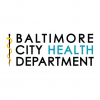Baltimore City Health Department Receives New Private Funding for Opioid Crisis
Monday Jul 10th, 2017
FOR IMMEDIATE RELEASE
Health Advocates Call for More Resources to Fight Opioid Epidemic in Baltimore City
BALTIMORE, MD (July 10, 2017)—Baltimore City Health Department today announced that it received a new grant from the Open Society Institute—Baltimore (OSI) to support efforts to reduce stigma around addiction and save lives from overdose. The grant, which totals $200,000, will be used to fund rapid outreach in response to spikes in reported overdoses and community engagement around racial equity and drug policy.
“Baltimore City is thankful for OSI’s contribution that will support the health and well-being of our city,” said Mayor Catherine E. Pugh. “We all have a role to play in protecting our community from the devastation and trauma caused by addiction and overdose.”
OSI’s grant provides critical resources as the opioid crisis worsens. According to recently released data, there were 694 fatal overdoses in Baltimore City in 2016. Fatal overdoses involving fentanyl—an opioid that is 50 to 100 times stronger than morphine—have increased 35-fold since 2013.
“As the opioid epidemic continues to plague our city, state and country, the resources have not kept pace with the need,” said Baltimore City Health Commissioner Dr. Leana Wen. “We are extremely grateful that OSI, our long-time partner in the fight against the opioid epidemic, has provided vital funding during this time of a public health crisis. Baltimore City is on the frontlines of the epidemic. We know what works; we will continue to work with all of our partners to obtain the resources we desperately need to save lives.”
In December 2016, Congress passed the 21st Century Cures Act, which authorized $1 billion over two years to address the opioid epidemic, in addition to funding for mental health research and treatment. U.S. Senators Ben Cardin and Chris Van Hollen announced in April that Maryland would receive approximately $10 million a year for the next two years. Additionally, Governor Hogan announced a State of Emergency in response to the opioid epidemic and pledged $50 million over five years in funding to address the crisis.
On Friday, it was announced that Baltimore City would receive $830,429 in funding for the local Opioid Intervention Team, plus additional resources for naloxone and a crisis center. Of the $22 million in funding announced last week, the state committed $1.2 million to the Baltimore City Health Department so far. The City experienced one-third of all of Maryland’s overdose deaths in 2016.
“It will take close partnership between state, local, federal, and private entities to overcome the opioid crisis that is devastating communities across Maryland” said Senator Chris Van Hollen. “Working together with all of our partners, we can save lives and resolve the crisis. I applaud the Baltimore City Health Department for its leadership in saving lives and caring for many of Maryland’s most vulnerable residents. I will continue to fight for resources on the federal level – and fight tooth and nail against efforts to pass legislation that would dismantle our health care system and make the fight against opioid addiction even more difficult.”
Following her appointment in January 2015, Dr. Wen declared opioid overdose a public health emergency and implemented a three-pronged citywide plan to prevent overdose, increase access to treatment, and eliminate stigma around the disease of addiction. A key component of this plan is the expansion of access to naloxone.
In October 2015, Baltimore City became the first jurisdiction in Maryland to issue a standing order for naloxone, a blanket prescription enabling Dr. Wen to prescribe naloxone for all of Baltimore City’s 620,000 residents. On June 1, 2017, a new standing order went into effect that made it even easier for residents to obtain naloxone by removing the previously-required proof of training to obtain the medication.
Since 2015, more than 23,000 Baltimoreans have been trained to use naloxone. Those residents have in turn saved more than 1,000 lives from overdose. However, Baltimore City is currently facing a shortage of resources to purchase additional naloxone to equip outreach workers and residents in the community. Nationwide, only 1 in 10 people with the disease of addiction are able to receive treatment, according to a recent Surgeon General report.
“The opioid epidemic is destroying many lives, families and communities in Baltimore,” Cummings said. “This grant will help identify neighborhoods in crisis so that valuable resources can be effectively directed to those areas in which need for public health interventions is greatest.”
